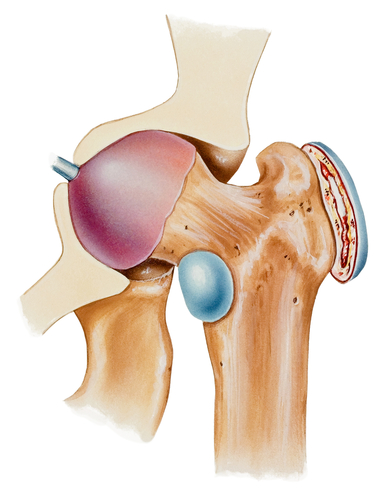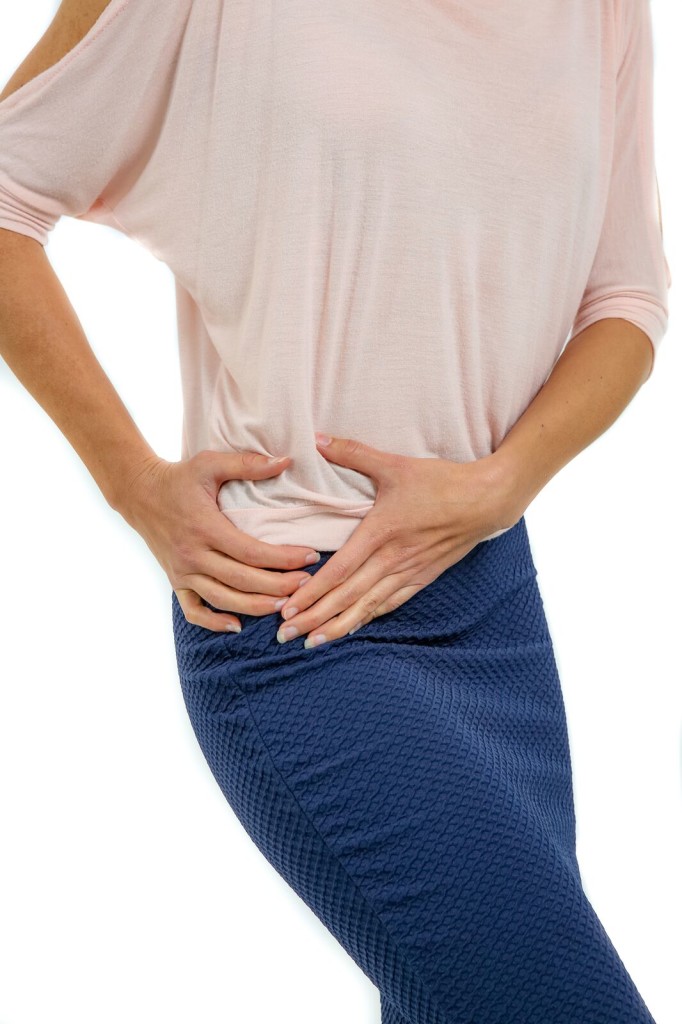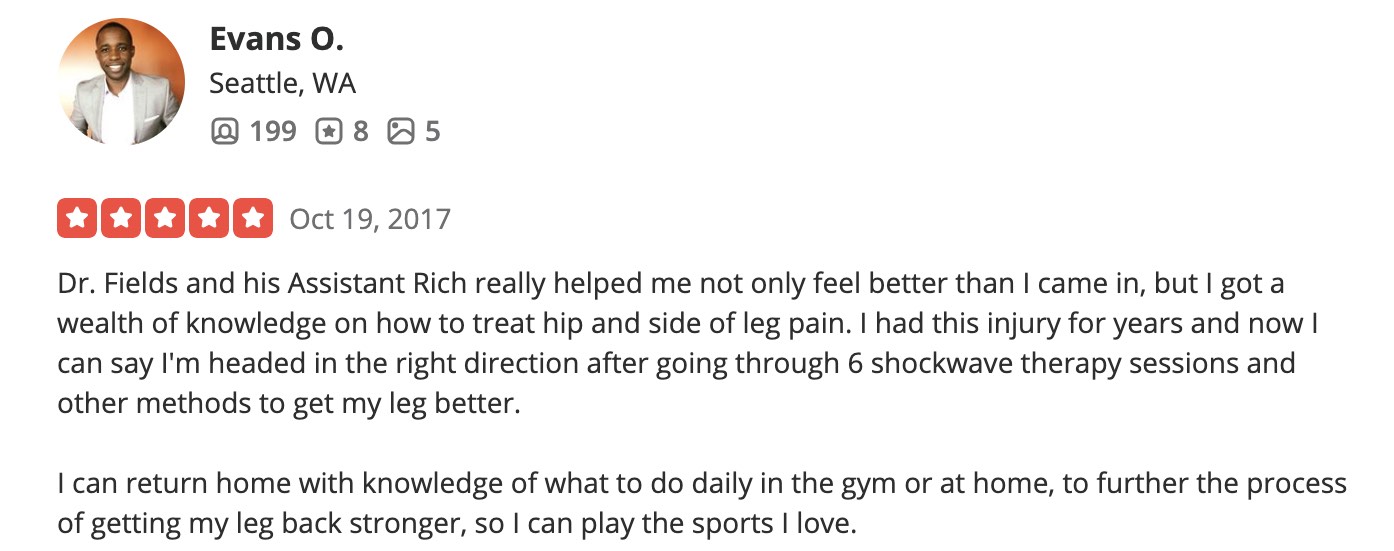🎥 Chapters
00:00 Understanding Hip Pain: Causes and Symptoms
0:11 The Anatomy of Hip Bursitis and Greater Trochanteric Pain Syndrome (GTPS)
2:23 Why Cortisone Shots Might Not Be the Answer for Hip Bursitis
3:41 Piezowave Shockwave Therapy (ESWT): A Regenerative Solution for Hip Bursitis
4:55 Research Insights: Comparing ESWT to Traditional Treatments for Musculoskeletal Disorders
5:32 Long-Term Relief: The Benefits of Shockwave Therapy for Hip Bursitis versus Corticosteroids
7:34 Shockwave Therapy with Stretching and Exercises for Hip Stabilization
Extracorporeal Shockwave Therapy and Trochanteric Bursitis
With Chiropractor in Los Gatos, San Jose, SF Bay Area, CA
How can extracorporeal shockwave therapy help hip pain? Greater Trochanteric Pain Syndrome (GTPS), also known as trochanteric bursitis or hip bursitis is a common condition where there is pain and tenderness over the outer hip. The pain can come from going upstairs, standing from a sitting position and lying on the involved hip. It was previously thought that trochanteric bursitis primarily involved inflammation of the bursae, which are fluid-filled sacs that cushion the tendons and muscles around the hip joint. However, the definition of hip bursitis has expanded with more research. GTPS may involve irritation or injury to the tendons and muscles in the hip area. Specifically, the gluteus medius and gluteus minimus. The tendinopathies of this area are perfect for the healing benefits of shockwave therapy.
ESWT, or Extracorporeal Shockwave Therapy, is a non-invasive treatment modality that shows great results in helping people with GTPS. ESWT the Piezowave machine involves the delivery of low energy focused shockwaves to the hip area. Here which helps to stimulate healing and reduce inflammation. These shockwaves promote tissue regeneration and improve blood flow to the affected area, aiding in the resolution of pain and discomfort associated with GTPS or hip bursitis. ESWT shines when people have not responded well to conservative treatments such as rest, physical therapy or medication. So, if you think you’ve done it all for your hip pain, think again.
Sources of pain in hip bursitis and how ESWT can help
Greater trochanteric pain syndrome (GTPS) is a condition characterized by chronic pain in the lateral aspect of the hip. The pain in GTPS can originate from several sources around the greater trochanter, including:
- Gluteal Tendinopathy: The tendons of the gluteus medius and gluteus minimus muscles can become irritated or degenerative, leading to pain. This is one of the most common sources of pain in GTPS and shockwave therapy is excellent when it comes to tendon pathologies.
- Trochanteric Bursitis: Inflammation of the bursa (a fluid-filled sac that reduces friction between tissues) overlying the greater trochanter can cause significant pain. However, recent studies suggest that bursitis is often a secondary condition rather than the primary cause of pain. Inflammation in and of itself is not a bad thing. What is important is that the body goes through the inflammation. With ESWT your inflamed bursa will be helped to go through to inflammation resolution.
- Iliotibial Band (ITB) Friction: The ITB can cause friction and compressive forces over the greater trochanter, leading to hip pain. This is often exacerbated by activities that involve repetitive hip movements. The TFL contributes to your ITB and can play a role in GTPS. By using shockwave therapy on your TFL, we can take tension off of your ITB. This, in turn, relieves mechanical stress from your outer hip, knee cap and even down to your fibula bone.
- Tendon Tears or Partial Ruptures: Small tears or partial ruptures in the tendons of the hip muscles can lead to localized pain and discomfort. Research shows that ESWT is regenerative medicine and can help your tendons form new collagen bringing back their strength.
- Hip Joint Pathologies: Conditions such as hip osteoarthritis can also contribute to pain in the greater trochanteric region, though the primary source of pain is the joint itself. The three hallmarks of osteoarthritis are a loss of collagen that leads to joint space narrowing, bone spurs and subchondral sclerosis. Shockwave therapy can help regenerated the collagen, reduce the size of the bone spurs and help the pathology at the subchondral bone.
- Referred Pain: Pain from the lumbar spine or sacroiliac joints can sometimes be referred to the greater trochanteric area, making it important to consider these regions in the differential diagnosis. See the video and page on sacroiliac pain for more info on how shockwave therapy can help SI joint pain.
One of the key advantages of ESWT in treating GTPS is its ability to target the underlying pathology directly. By delivering shockwaves to the affected hip region, ESWT helps to break down scar tissue, reduce inflammation, and promote tissue repair. This can lead to significant improvements in pain relief and functional mobility for people with GTPS.
Radial shockwave therapy versus focused shockwave therapy
There is another type of therapy called Radial Shockwave that we do not recommend for hip bursitis. We had the reps come in and we wanted it to work because it was a cheaper machine but it caused bruises on the hips. Come to find out that this is not the same sound wave and it can be destructive. Instead, we went with the Piezowave due to its precision and low energy focused shockwaves. Whereas, radial shockwave this unfocused and there are some big contraindications to radial shockwave.
ESWT delivered by the Piezowave is a safe and effective alternative to more invasive treatment options such as corticosteroid injections or surgery. Unlike these interventions, which may carry risks such as tendon rupture, infection, nerve damage, or prolonged recovery times, ESWT with low energy-focused shockwaves is associated with few to zero adverse effects and requires no downtime.
Types of Hip Pain that Can Be Helped with ESWT
- Chronic Trigger Points
- Avascular Necrosis
- Hip Arthritis
- Trochanteric Bursitis
Chronic Hip Trigger Points and Hip Pain
Myofascial trigger points can play an important role in chronic pain and an alteration in hip joint mechanics. This can lead to damage of the hip joint in the form of degeneration and arthritis. We have even had people come to us in our Los Gatos and San Jose offices who were recommended for surgery based on a medical evaluation but, after a course of ESWT care for their hips, were functional again.
Too many middle aged people are getting hip replacement surgery. The Piezowave 2 is delaying and even eliminating the need for surgery.
Trigger points can be detected by:
- Palpation [1]
- MRI scan [2]
- Infrared thermography [3]
- Ultrasonography [4]
- Diagnosed and treated with the Piezowave 2 ESWT [5].
Trigger points are irritable points within the muscle that radiate and affect other areas of your body. Whatever the hip problem, trigger points usually play a vital role in bringing back the function of the hip and the Piezowave 2 has been shown to eliminate trigger points.
The three muscle groups that refer pain to the hip joint are the Quadratus Lumborum (QL), the Tensor Fascia Latae (TFL) and the Piriformis. All are easily accessible with our Piezowave 2 machine. The German study showed objective before and after MRI trigger point changes in trigger points and decreased pain. They believe that the Piezowave 2 increased proteolytic enzyme activity that and when you are being treated you feel it working.
Avascular Necrosis of the Femoral Head (AVNFH)
Your bones need a regular supply of blood to stay alive. When blood is decreased, a dying-off, or necrosis, occurs. In the hip this is called Avascular Necrosis of the Femoral Head and, if it continues, the femoral head will crumble and collapse. The joint cartilage then tends to degenerate and the joint becomes severely arthritic.
Trauma, Cortisone use, alcohol abuse, autoimmune diseases and other conditions contribute to causing AVNFH.
One of the most researched results from ESWT is the result of angiogenesis or blood vessel proliferation. This is exactly what someone with avascular necrosis needs and now there is research to back up the claims:
“…application of shockwave results in regeneration effects in hips with osteonecrosis of the femoral head.” [6]
“… therapeutic effect in the repairing and reconstructing osseous tissue.” [7]
“The overall clinical outcomes were improved in 83%…” [8]
“…this method may offer an alternative to invasive treatment modalities for femoral head necrosis.” [9]
In the Ma study microvessel density, vascular endothelial growth factor and mRNA expression were increased for as much as 12 weeks after ESWT. [10]
All of this combined with the clinical results we have seen in our office with the Piezowave 2 are giving people hope.
NOTE: Hip trigger points can radiate down the leg and into the outer part of the knee creating something called IT Band Syndrome.
Hip Arthritis And ESWT
Working in Los Gatos/San Jose, CA, we have seen hip arthritis from a small joint restriction to hip replacement. When the ball-and-socket joint of you hip takes a lot of wear-and-tear, the long-term result is osteoarthritis. Osteoarthritis is a common cause of hip pain and extracorporeal shockwave therapy (ESWT) is showing promising results for arthritic joints.
The pain with hip arthritis is often a stiffness in the groin and pain can spread from there. Extracorporeal shockwave therapy can help arthritic hips by:
- Increasing tendon elasticity
- Taking pressure off of the arthritic hip joint
- Increasing blood flow to arthritic hips [6]
- Helping heal osteoporotic arthritic hips [11]
People have come to our offices in Los Gatos and San Jose thinking they needed surgery for their hip arthritis and knees that are leading active lives again without the need to get cut open.
ESWT and Trochanteric Tendinitis / Bursitis

Cross section of the trochanteric bursa
If you have pain on the side of your hip, you may have trochanteric tendinitis or bursitis. Overstraining of the surrounding muscles and ligaments on the side of the hip can lead to inflammation and intermittent pain. The good news is that extracorporeal shockwave therapy (ESWT) can help.
In one study, people who suffered from greater trochanteric bursitis for approx. 14 months and had tried many other modalities still had significant decreases in pain with ESWT [12].
With Trochanteric Bursitis it is important to have a proper evaluation of your hip mechanics, inflammation in the area, possible scar tissue and any trigger points. With this condition, in particular, a doctor with excellent palpation skills is imperative. For this reason, you will be evaluated by one of our doctors of chiropractic to determine location and penetration depths of your treatment.
Some techniques to aid in your hip’s recovery:
- See our “Foam Rolling and Stretches for Hips” video
- With caution, begin to strengthen your glutes and hip (video)
- Weight loss, to reduce pressure on your hip
- Avoid activities that cause pain while receiving ESWT care
You can reach Dr Adam Fields for in-person (Los Gatos and San Jose, California) or telehealth appointments here.
About Chiropractor Dr Adam Fields
Dr Adam Fields is a practicing chiropractor in the Bay Area in Northern California and helps people daily in his office with many challenges that can be helped by shockwave therapy from tendinopathies, arthritis, cartilage regeneration, post surgical scar tissue, pelvic pain, altered biomechanics and more. He uses Endonasal Cranial Adjusting, the Muncie Technique, Extracorporeal Shockwave Therapy (ESWT), Class IV Laser Therapy, posture correction, lifestyle modification, muscle work, and other techniques to help his patients.




